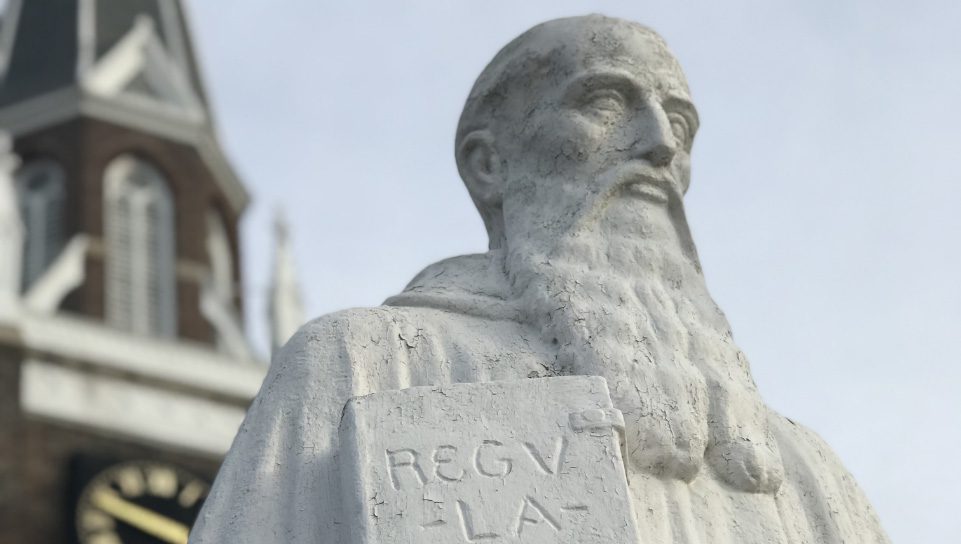Benedictines
A Tradition 1,500 Years Strong
The Benedictine order dates back to 529 A.D., when St. Benedict of Nursia founded a monastery at Montecassino, Italy. Today, there are about 400 monasteries around the world with about 7,500 monks and 13,000 nuns. Throughout its history, the order has maintained the vital tenets established by its namesake and founder.

Who Was Benedict of Nursia?
Benedict was born in 480 A.D., four years after the deposition of the last Western Roman Emperor. Benedict at first had no intention of reforming the monastic way of life; even less was he preoccupied with bringing a new Europe into existence. As a youth, he felt restless in the society of his own middle class and aspired to a life that was more satisfying and capable of good than was possible in his native town of Nursia or in Rome.
Like many before him, he withdrew into solitude to live as a hermit. But before long his retreat was discovered and like-minded persons asked to be allowed to live with him under his direction.
Abandoning the eremitical life, he became a cenobite (a monk living in community). After years of practical experience, Benedict wrote his celebrated Rule for monasteries, in which he laid down the principles he had discovered and legislated for a way of life that he regarded as only the first step in the path of perfection.
His chief aim was to make his form of the monastic life accessible to all men of good will. It was not intended to be easy, but neither were its demands so severe as to scare away all but the most heroic souls. It was intended to satisfy the needs and abilities of the ordinary person and to encourage the generous and the strong to do even more for God. Because of the Rule’s eventual influence in spreading through all of Europe and guiding countless men and women in living the monastic life, Benedict came to be known eventually as the Father of Western Monasticism.
Benedict died in 547 and was buried in the abbey at Montecassino. In 1947, Pope Pius XII honored St. Benedict as the Father of Europe. His Feast Day is July 11.

Ora et Labora
The life of a monk turns on two hinges: prayer and work. Here at Belmont Abbey Monastery, our daily life is structured in the same way that was established by St. Benedict more than 1,500 years ago.
Each day is focused around the cycle of liturgical prayer, culminating in the celebration of the Mass. Throughout the day, all of our tasks are done as a prayer to God.

Since the model of the Benedictine life is the family, the monastic community functions as a family unit. Each monk assists in the daily life and work of the community. The monks may cover such tasks as:
- Preparation and care of the refectory (dining room).
- Serving as sacristan for the church and preparing
for liturgies. - Basic housekeeping.
- Serving as professors, administrators and campus ministers in our college community.
- Assisting in pastoral ministry in the local church.
- Welcoming and assisting guests.


All of this takes place under the careful direction of our Abbot, who guides our monastic community as a father guides his family. Abbot Placid Solari has guided our monastery since 1999. A Belmont Abbey monk since 1974, Abbot Solari also serves as Chancellor of Belmont Abbey College.

The Rule of Saint Benedict
Written by Saint Benedict of Nursia in the 6th century, the Rule provides spiritual and practical guidance to monks living together in the service of God. The Rule is composed of 73 chapters, each dealing with a specific aspect of monastic life.